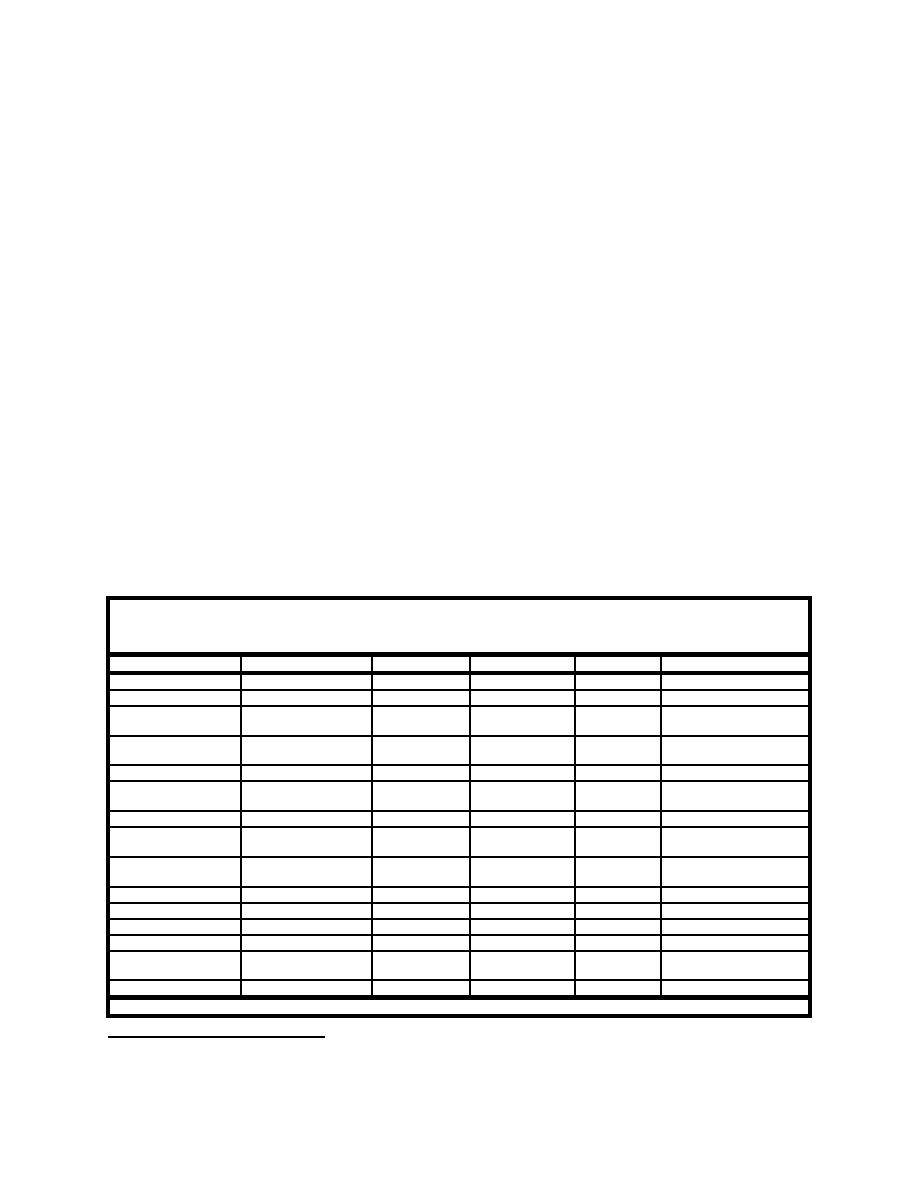 |
||
|
|
||
|
Page Title:
Table 2. Organisms Included in the ERDC-WES BSAF Database for which PCDD/F BSAFs Were Pooled to Calculate BSAFs and Statistic... |
||
| |||||||||||||||
|
|
 ERDC TN-DOER-R5
September 2004
few (2 to 4) replicates could be analyzed due to insufficient quantity of material, the results for
most species were consistent among the replicate samples.
Total organic carbon (TOC) in sediment samples was analyzed using EPA method 415.1
(USEPA 1983). The organic carbon in the sample was converted to carbon dioxide by wet
International Model 700TM TOC analyzer. Sediment samples were prepared externally using the
ampule method to convert TOC to CO2.
BSAF Derivation. Seven published studies were found in the ERDC BSAF and Lipid Database
reporting BSAFs of benthically coupled organisms for PCDD/F congeners or homologues
(Table 2). Most of the reports were of field studies and most were freshwater regimes. The
freshwater organisms included four species of fish, three species of mussel, and one each of
insect, crayfish, and shrimp. Of the saltwater organisms, two species were clam and two were
crab. Most of the tissues reported were whole body, but two studies reported BSAFs calculated
for ovary and liver in fish and hepatopancreas in crabs. No data were excluded from the
compiled dataset. In all, 97 usable BSAF values were found in the database. In addition to these,
52 BSAF values were added to the dataset from an unpublished report in which the oligochaete,
Lumbriculus variegatus, was exposed in the laboratory for 28 days to sediments from three sites
in Lake Ontario.1 Most of the BSAF information included sample size (n) and an estimate of
variability (usually standard error of the mean). Fractional n's sometimes resulted for the Lake
Ontario BSAFs when n was estimated as the mean of differing sample sizes for the four BSAF
input parameters.
Table 2
Organisms Included in the ERDC-WES BSAF Database for which PCDD/F BSAFs Were Pooled to
Calculate BSAFs and Statistics of Table 3
Species
Type of Organism
Fresh or Salt
Type of Study
Tissue
Reference
Clam
S
Lab
Whole Body
Pruell et al. (1993)
Macoma nasuta
Clam
S
Field
Whole Body
Kang et al. (2002)
Corbicula japonica
Crab
S
Field
Hepatopan.
Schell, Campbell and
Callinectes sapidus
Lowe (1993)
Crab
S
Field
Hepatopan.
Yunker and Cretney
Cancer magister
(2000)
Crayfish
F
Field
Whole Body
Currie et al. (2000)
Orconectes virilis
Fish
F
Field
Ovary
Schell, Campbell and
Ameiurus melas
Lowe (1993)
Fish
F
Lab
Whole Body
Kuehl et al. (1987)
Cyprinus carpio
Fish
F
Field
Whole Body
Currie et al. (2000)
Catostomus
commersoni
Fish
F
Field
Liver
Schell, Campbell and
Ictalurus nebulosus
Lowe (1993)
Insect
F
Field
Whole Body
Currie et al. (2000)
Hexagenia sp.
Mussel
F
Field
Whole Body
Marvin et al. (2002)
Dreissena polymorpha
Mussel
F
Field
Whole Body
Marvin et al. (2002)
Dreissena bugensis
Mussel
F
Field
Whole Body
Currie et al. (2000)
Pyganodon grandis
1
Oligochaete
F
Lab
Whole Body
Pickard (2002)
Lumbriculus
variegatus
Shrimp
F
Lab
Whole Body
Pruell et al. (1993)
Palaemonetes pugio
1
Unpublished data.
1
Scott W. Pickard, CELRB-TD-OT, USACE District, Buffalo, 1776 Niagara Street, Buffalo, NY, 14207, USA,
716-879-4404.
4
|
|
Privacy Statement - Press Release - Copyright Information. - Contact Us - Support Integrated Publishing |